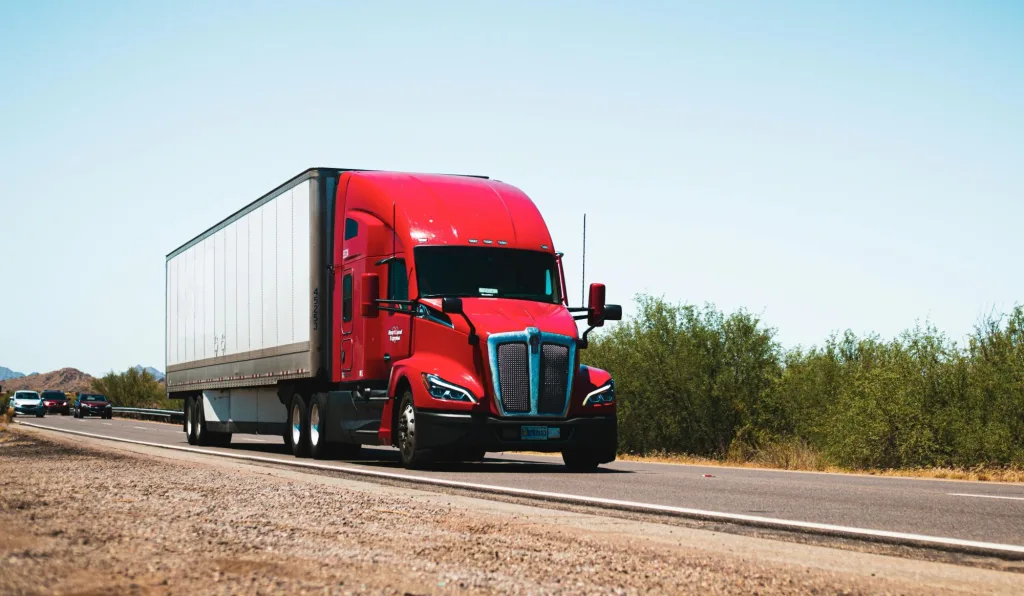
Semi Truck driving is one of the most dependable job pathways for people looking for security, freedom, and opportunity. Trucking provides a variety of driving options to suit various lives and objectives, regardless of your level of expertise behind the wheel. There is a route for every kind of driver, whether you want to spend your days in a place you know well or travel across states for weeks at a time. The trucking industry is one of the largest employment sectors in the U.S., supporting more that 8.4 million jobs and 3.58 million professional drivers, according to the American Trucking Associations’ American Trucking Trends 2025 report.
Selecting between short-distance, regional, and national (commonly referred to as over-the-road or OTR) driving is one of the most crucial decisions a truck driver will have to make. Every route type has an own routine, earning potential, and home time. For instance, regional drivers strike a mix between regular weekends at home and road time, while short-distance drivers enjoy daily home returns and regular timetables. On the other side, OTR drivers travel thousands of miles throughout the United States and put in weeks on the road, but they are paid more.
Building a prosperous and satisfying trucking career requires an understanding of the differences between these driving possibilities. Your choice should take into account your financial objectives, family obligations, and personal demands. Understanding how each kind of trucking operates can help you make an informed decision that positions you for long-term fulfillment and career advancement, regardless of your preferences for adventure, home time, or a larger salary.
1. Short Distance Truck Driving
Overview:
Short distance trucking, often referred to as local trucking, involves transporting goods within a relatively confined area—usually within a 100 to 250-mile radius from a central hub or terminal. These routes are commonly found in urban and suburban settings where deliveries are made to retail stores, warehouses, construction sites, or residential areas. Drivers typically complete multiple stops in a single day, which means frequent loading and unloading of cargo and close interaction with customers or clients. The work is generally fast-paced and can involve navigating through heavy traffic, tight loading docks, and various road conditions. One of the biggest advantages of local trucking is that drivers almost always return home at the end of their shift, making it an ideal option for individuals with families or personal commitments who prioritize a consistent daily routine. While local drivers may earn less than their regional or OTR counterparts, the steady schedule, lower mileage demands, and daily home time make this type of driving highly desirable for those seeking stability and work-life balance.
Key Characteristics:
2. Regional Truck Driving
Overview:
Regional truck drivers typically operate within a defined geographic area of the country—such as the Midwest, Southeast, or Pacific Northwest—offering a balance between long-haul and local driving. These routes usually range from 250 to 1,000 miles and take anywhere from one to five days to complete. Because of the shorter distances compared to over-the-road (OTR) driving, regional drivers often have more predictable schedules and can return home weekly or even several times throughout the week, depending on the company and route structure. This makes regional driving a popular choice for those who want more home time but still enjoy being out on the open road. Drivers often run dedicated routes, meaning they serve the same customers and follow familiar paths, which can reduce stress and improve efficiency. Regional driving also exposes drivers to a mix of highway and local road conditions, requiring strong navigation and time management skills. With moderate pay and a better work-life balance than OTR, regional trucking is a practical option for drivers looking to build steady careers without sacrificing too much time at home.
Key Characteristics:
3. National (Over-the-Road) Truck Driving
Overview:
Over-the-road (OTR) truck drivers operate on the broadest scale in the trucking industry, covering long-haul routes that span across multiple states—and in some cases, across international borders into Canada or Mexico. These drivers are the backbone of nationwide logistics, often spending two to four weeks on the road at a time before returning home for rest. OTR drivers haul freight over thousands of miles, navigating a wide range of weather conditions, road regulations, and terrain. Their workdays can be long and unpredictable, requiring strong time management skills and the ability to adapt quickly. Because of the extended time away from home, most OTR trucks are equipped with sleeper cabs that function as mobile living quarters, offering space for sleeping, cooking, and storage. While the lifestyle can be challenging—often isolating and physically demanding—it also offers the highest earning potential, with many companies offering mileage-based pay, bonuses, and incentives for timely deliveries and safe driving records. For drivers who crave independence, variety, and adventure, OTR driving can be a rewarding career path.

Key Characteristics:
Which One Should You Choose?
The best fit depends on your lifestyle, income goals, and personal priorities:
Each path plays a crucial role in the supply chain and offers growth potential, especially for those interested in eventually owning their own rig or starting a small fleet.
Choosing between short-distance, regional, and national (commonly known as over-the-road or OTR) semi truck driving is one of the most important decisions you will have to make when you first start working in the trucking industry or want to change careers. Every kind offers a different way of life, work schedule, and possible income. For drivers who prefer to spend every night at home, short distance trucking is the best option. Routes typically include several stops, a lot of loading and unloading, and constrained delivery windows while remaining inside a city or metro area. Even though the compensation is frequently less than for longer routes, many with families or other personal obligations find it tempting because of the daily home time and predictable schedule.
Between local and long-distance routes, regional trucking provides a compromise. With runs that last one to five days and cover a few hundred miles, drivers usually cover a certain geographic area, such as the Midwest or Southeast. Better money than local driving is possible with this arrangement, which frequently includes weekends spent at home. In order to familiarize themselves with the topography, road conditions, and customer locations, regional drivers typically have predetermined or repeating routes. For people who prefer regular time at home but want more diversity than local driving, it’s a compelling choice.
Carrying freight across numerous states or coast to coast is known as national or OTR driving, and truckers are frequently on the road for weeks at a time. The greatest earning potential and chances for mileage-based bonuses and incentives are found in these roles. Sleeper cabs and lengthy highways are commonplace for OTR drivers because they live in their trucks for a large portion of the day. This way of life is ideal for people who love to travel and don’t mind spending a lot of time away from home because it demands independence, endurance, and a strong sense of adventure.
The ideal option ultimately depends on your lifestyle and personal objectives. Knowing the distinctions between these professions enables you to make the best professional decision, regardless of your preferences for regular home time, increased earning potential, or a well-balanced schedule. Every stage of the journey is supported by TrueCore Capital. TrueCore Capital provides tailored financing options to help you acquire the tools you need to be successful in short-distance, regional, or national trucking, whether you’re buying your first semi truck or growing your fleet.
Ready to start your journey? Give us a call at (805) 422-7342 or submit a quick contact form below and one of our specialists will reach out to you shortly.